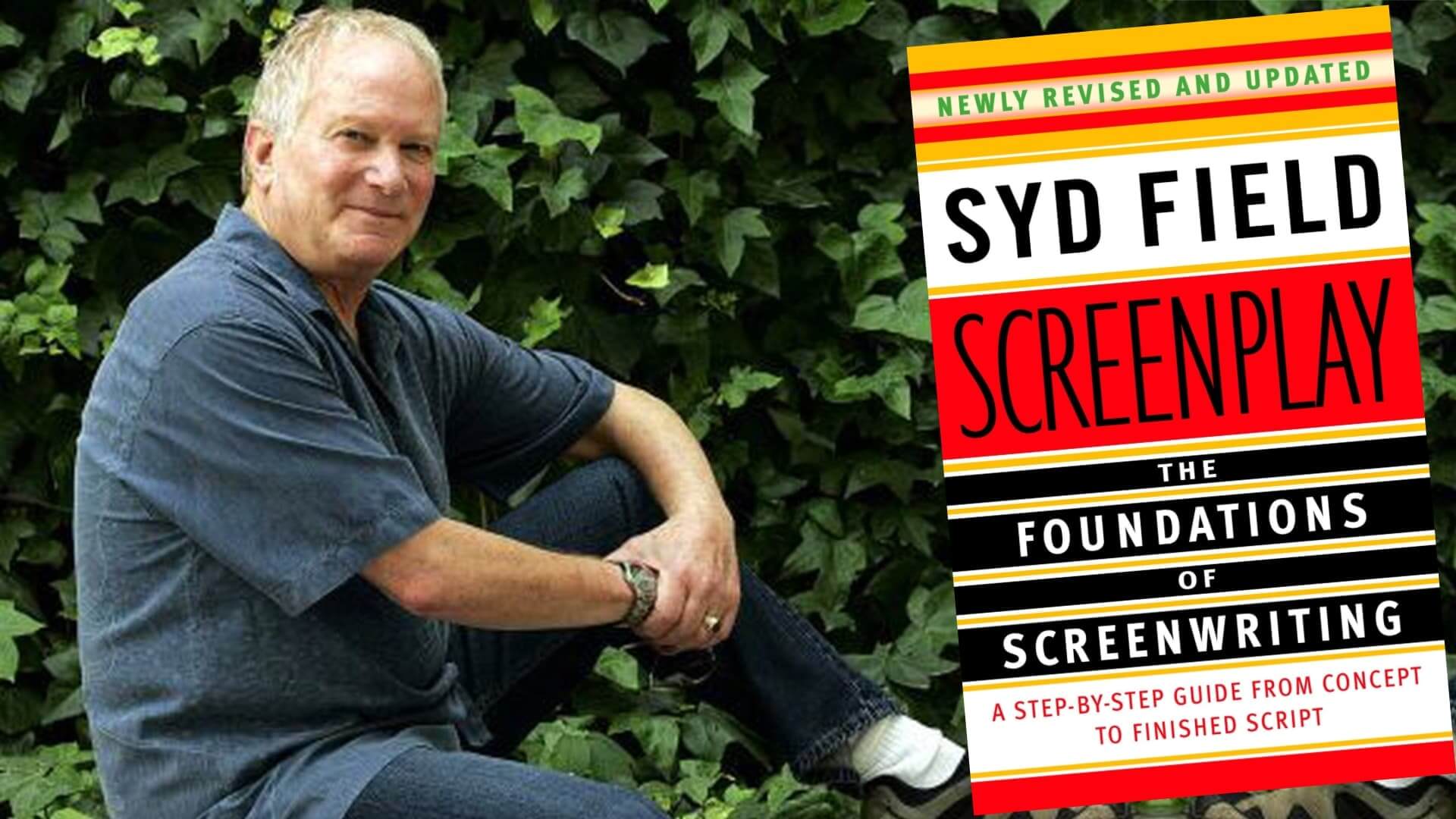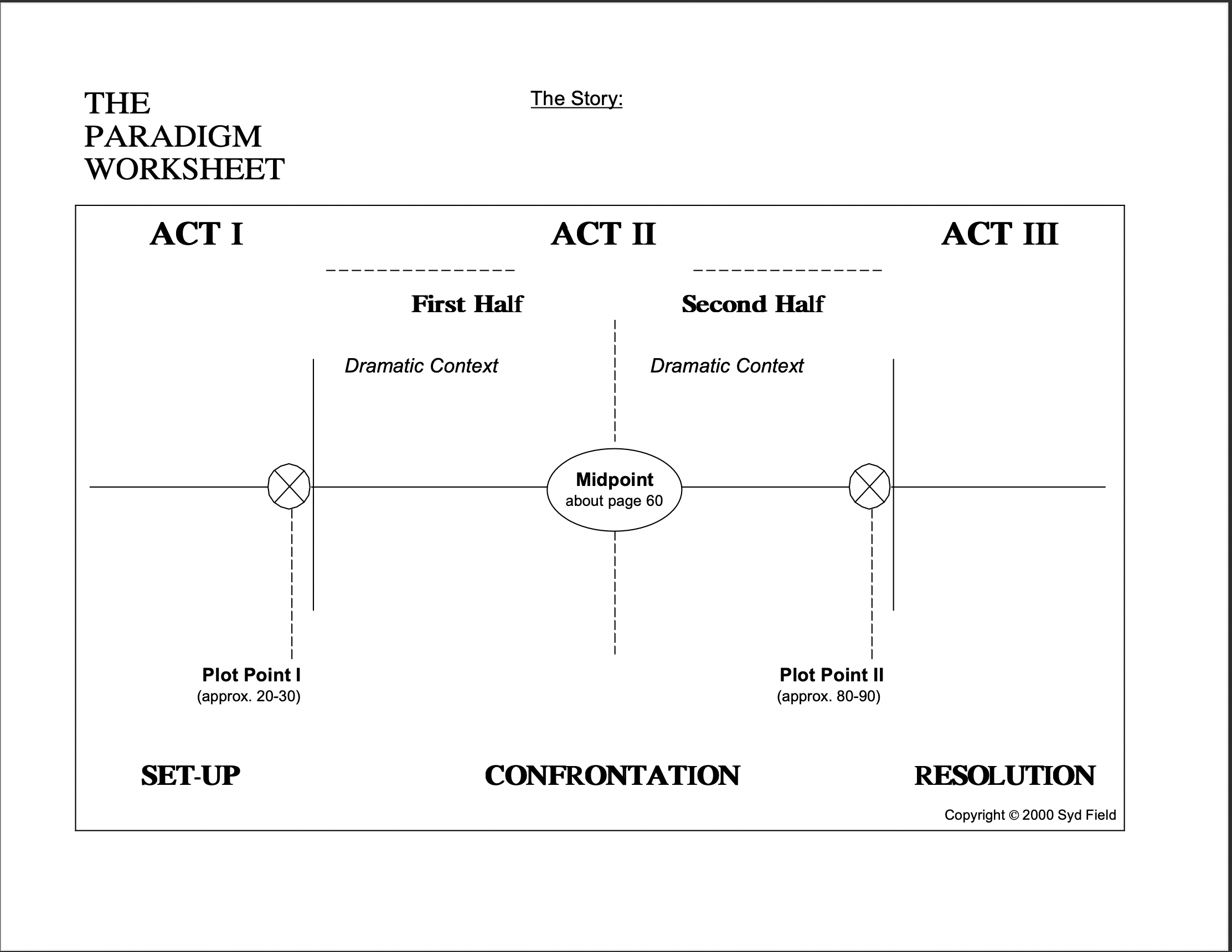Who is Syd Field? Syd Field was a pioneering figure in Hollywood for screenwriters, producers, and storytellers. His 1979 book Screenplay served as an instructional guide for some of the world’s most prolific scriptwriters. But Field wasn’t just a book-writer, he was a published screenwriter and professor too. We’re going to examine Field’s influence on Hollywood by looking at his book Screenplay, Paradigm script worksheet, and testimonials from those who learned from him.
Syd Field Screenplay Structure
Screenwriting guru extraordinaire
Ask any professional screenwriter how they learned the craft of screenwriting and a large contingency will probably tell you they learned it from Syd Field. Syd Field’s Screenplay is regarded as an authoritative text on screenwriting, rivaled almost only by Blake Snyder’s Save the Cat and David Trottier’s The Screenwriter’s Bible.
SYD FIELD BIOGRAPHY
Who is Syd Field?
Syd Field (1935-2013) was an American writer and lecturer who rose to prominence for writing the 1979 book Screenplay: The Foundations of Screenwriting. Field worked as a script-reader, consultant, and freelance writer before breaking through in the late '70s. Field later went on to become a screenwriting professor at USC in the Master of Professional Writing program.
Field may not be the greatest screenwriter of all-time — but he was a great teacher. Let’s review his teaching impact by watching this tribute video from the USC Dornsife College of Letters, Arts and Sciences.
Syd Field Story Structure: USC Tribute
Okay, how cool is it that Syd Field was mentored by Jean Renoir? Renoir was one of the great international film directors of his time – and an invaluable educator for filmmakers. Field clearly learned a lot from Renoir and he used his knowledge to educate generations of future filmmakers.
Screenplay by Syd Field
Syd Field Screenplay structure
Now that we know who Syd Field is, let’s analyze why his works are so important to screenwriters. One of Syd Field’s students at USC was Judd Apatow, writer of Knocked Up, The 40-Year Old Virgin, and more.
Apatow says that Field’s theory on the three-act structure has influenced him on every script he’s ever written.
Judd Apatow on Syd Field Screenplay the Foundations of Screenwriting, via Vanity Fair
Apatow isn’t the only writer Field has influenced though – some other writers you may recognize include Emmy winner Tina Fey, Oscar nominee John Singleton, and four-time Oscar winner Alfonso Cuarón.
And just about every successful screenwriter who’s studied under Field has credited him as an enormous influence on their works.
Let’s listen to Field explain how he came to become one of the world’s preeminent screenwriting teachers.
Going to the Movies • Syd Field Interview by ETV Film Inc.
One thing that you may notice from listening to Field speak is that he had a great deal of humility in talking about screenwriting. I think that’s a major reason why he was successful – it’s one thing to write something great, it’s another to understand why it’s great.
Field knew the inner machinations of stories like the back of his hand which was an integral reason why he was a great educator.
Syd Field Paradigm Worksheet
Analyzing the Paradigm worksheet
The paradigm worksheet details how to utilize the three-act structure in screenwriting. Syd Field initially created the paradigm worksheet as a companion piece for his book Screenplay, but it’s since developed an audience of its own.
Let’s review the Paradigm worksheet, then we’ll analyze how to use it.
Syd Field Paradigm Worksheet PDF Download
Click to view and download the entire Syd Field Paradigm Worksheet PDF below.
Click above to download Syd Field Paradigm Worksheet PDF
The Syd Field Paradigm worksheet is centered around the idea that every story is told in three acts: set-up, confrontation, and resolution. The first and third acts are about half the length of the second act each.
The first act is where the plot, characters, and setting are established. It concludes with the introduction of a major point of conflict.
The second act is where the protagonist contends with a major point of conflict. Halfway through, the protagonist reaches a point of no return (the midpoint) and is forced to confront their antagonist(s) head on.
The third act is where the conflict resolution takes place; characters are forced to reflect back on the themes of the story and answer critical questions about their success or failure.
The Paradigm worksheet calls for a story structure as old as time, but it’s effective nonetheless. But for a story to be successful, it needs to have something called “a dramatic need.”
A dramatic need is essentially what a character wants – and it needs to be something we sympathize with. Listen to Syd Field explain the importance of dramatic need in the video below.
Syd Field Screenplay Structure • Character and Dramatic Need
When a character’s dramatic need is a vice, like power or control, then we usually regard them as villainous. When a character’s dramatic need is humanitarian, like honor or fairness, then we usually regard them as heroic. Oftentimes, the best characters have dramatic needs that aren’t black or white.
For more on the importance of dramatic needs, I suggest you watch Rebel Without a Cause. It’s one of the first movies in Hollywood history to expertly navigate the nuance of dramatic need.
Needless to say, Syd Field has had an enormous influence on screenwriting. His works and lectures are legendary in cinema circles and should be regarded as authoritative texts for burgeoning screenwriters.
Up Next
Shane Black Movies & Screenwriting
Syd Field is just one of Hollywood’s most venerated screenwriters – Shane Black is another. Did you know Shane Black was the highest paid screenwriter back in the 90s? Shane Black changed the landscape of Hollywood forever when he sold his The Last Boy Scout script for a record-setting $1.75M. Follow along as we explore the commercial side of writing salable Hollywood scripts.

